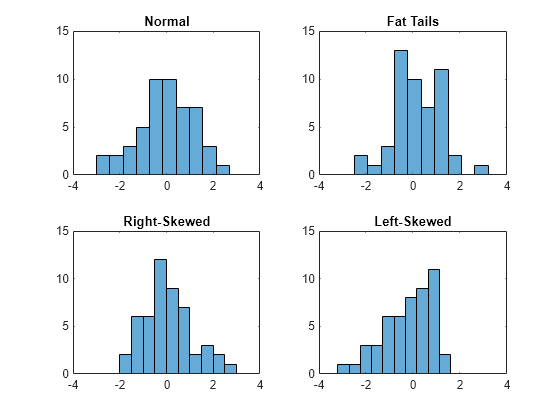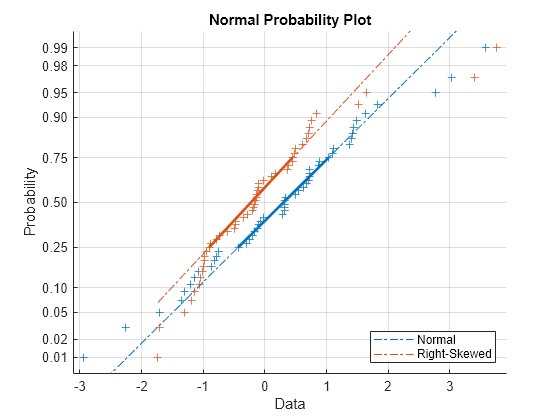normplot
Normal probability plot
Description
normplot( creates a normal probability plot
comparing the distribution of the data in x)x to the normal
distribution.
normplot plots each data point in x
using plus sign ('+') markers and draws two reference lines that
represent the theoretical distribution. A solid reference line connects the first
and third quartiles of the data, and a dashed reference line extends the solid line
to the ends of the data. If the sample data has a normal distribution, then the data
points appear along the reference line. A distribution other than normal introduces
curvature in the data plot.
Examples
Input Arguments
Output Arguments
Algorithms
normplot matches the quantiles of sample data to the quantiles of
a normal distribution. The sample data is sorted and plotted on the x-axis. The y-axis
represents the quantiles of the normal distribution, converted into probability values.
Therefore, the y-axis scaling is not linear.
Where the x-axis value is the ith sorted value from a sample of size N, the y-axis value is the midpoint between evaluation points of the empirical cumulative distribution function of the data. The midpoint is equal to .
normplot superimposes a reference line to assess the linearity of
the plot. The line goes through the first and third quartiles of the data.
Alternative Functionality
You can use the probplot function to create a probability
plot. The probplot function enables you to indicate censored data
and specify the distribution for a probability plot.
Version History
Introduced before R2006a




